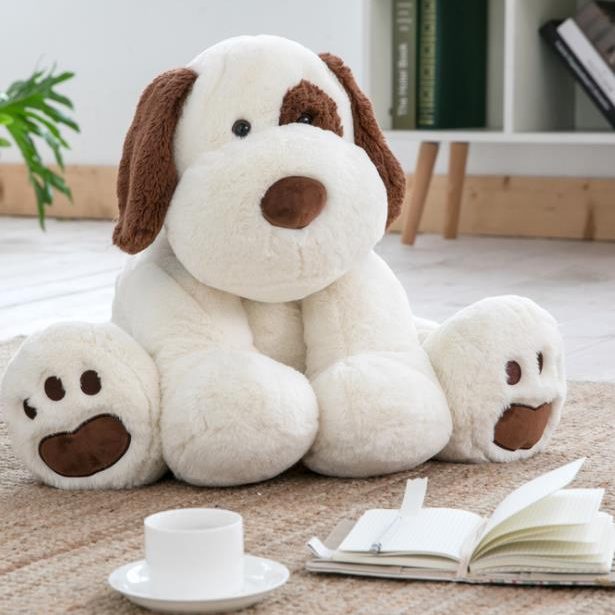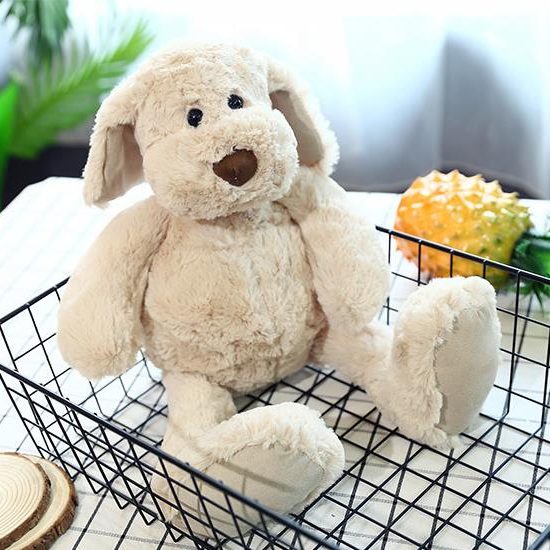Plush or velvet toys are cute and comfortable stuffed animals have always been people’s favorite. Whether they are happy or lonely, they will accompany you silently. However, over time, cute stuffed animals may become an excellent place for bacteria to breed because of external pollution, becoming our invisible killer of health, discarding them, and reluctant. Therefore, in order to maintain the brightness of the stuffed animals and their own health, it is very necessary to clean the stuffed animals regularly. In fact, in addition to being sent to the dry cleaners, you can also clean some of the lesser stuffed animals. Here are some common and practical methods for your reference and choice.
When buying a stuffed animal, the stuffed animal has a label indicating the cleaning method. If not, ask the clerk how to maintain and clean it, or judge according to its material, such as clothes worn on the fluff, ribbon, hats, backpacks, and other accessories, etc., can be disassembled and cleaned, in fact, the general fluff can be washed, unless it is some expensive and more advanced stuffed animals, because the material relationship should be sent to dry cleaning.
method 1: Materials required: a bag of coarse salt (large salt) and a plastic bag
Put the dirty stuffed animals in a plastic bag, put a proper amount of coarse salt, then tie the mouth and shake it vigorously. After a few minutes, the toy is clean, and we will see that the salt has turned black.
Note: It is not a wash but a suck! It can also be used for stuffed animal plush collars and cuffs of different lengths; it can also be used for car seat cushions (pour the salt under the mat to force it).
Principle: The adsorption of dirt by salt (sodium chloride) is utilized. Because of the strong disinfection effect of the experiment, not only the toy is cleaned. It can also effectively kill bacteria and viruses. In a nutshell, small things like plush collars and plush cushions in the car can also be “cleaned” in this way.
Method 2: Materials required: water, silky detergent, soft brush (or other tools can be used instead)
Put water and silky detergent in the basin, stir the water in the basin with a normal soft brush or other tools, stir up the rich foam, and then brush the surface of the stuffed animal with a soft brush and foam. Be sure not to get too much moisture on the brush. After brushing the surface of the stuffed animal, wrap the stuffed animal with a bath towel and press it in a basin filled with water. This will remove dust and washing liquid from the stuffed animals. The stuffed animals are then soaked in a water basin filled with a softener for a few minutes, and then washed several times in a basin filled with water until the water in the basin becomes clear from the turbidity. The cleaned stuffed animals are still wrapped in bath towels, gently dehydrated in a washing machine, and the dehydrated stuffed animals are shaped and combed, and then placed in a ventilated place to dry.
Pay attention to drying in the air when drying, it is best not to expose to the sun, not to dry, not to the sun cannot be sterilized, exposure is easy to change color.
Method 3: stuffed animal cleaning method and disinfection method more suitable for larger stuffed animals
Buy a packet of baking soda, put soda powder and dirty stuffed animals in a large plastic bag, shake the bag tightly and slowly, and slowly find the stuffed animals clean. Finally, the soda powder adsorbs the dirt and turns grayish black, and removes the soda powder. This method is more suitable for bulky stuffed animals and velvet stuffed animals.
Method 4: More suitable for toys such as electronics and vocal
In order to prevent the wear of the small parts on the stuffed animals, the parts of the stuffed animals are taped, put into the laundry bag and washed by the washing method. After drying, hang in the shade to dry. When drying, you can pat the stuffed animals to make their fur and stuffing fluffy and soft, so that the shape of the stuffed animals will be better after they are cleaned.
We usually put a proper amount of detergent in the water to wash it. At the same time of washing, you can also add the appropriate amount of washing powder or laundry detergent for disinfection to achieve antibacterial and anti-mite functions.









